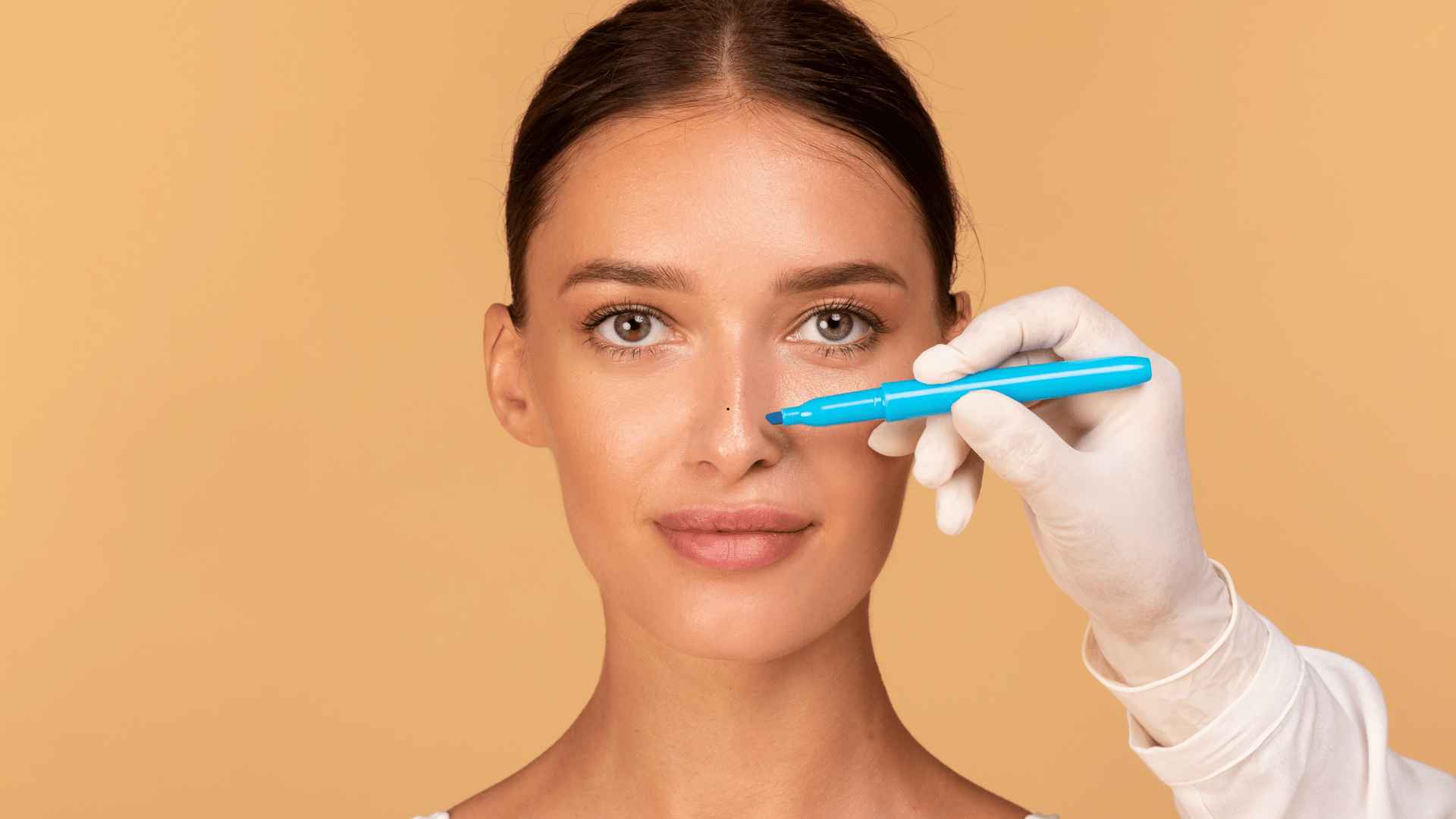Rhinoplasty, commonly known as a nose job, is typically associated with enhancing the appearance of the nose. However, this surgical procedure can also serve as a solution for individuals experiencing nasal breathing issues. Rhinoplasty can address a variety of functional concerns related to the nasal passage, including breathing difficulties caused by structural abnormalities. This article explores how Rhinoplasty in Dubai can help improve nasal airflow, correct functional problems, and enhance the overall quality of life for individuals with breathing issues.
What Is Functional Rhinoplasty?
Functional rhinoplasty refers to the surgical procedure performed to correct breathing problems caused by structural abnormalities in the nose. While rhinoplasty is often performed for cosmetic reasons, functional rhinoplasty focuses on improving the functionality of the nose, making it easier to breathe. Many individuals experience difficulty breathing through their nose due to issues such as nasal obstruction, a deviated septum, or enlarged turbinates.

Why Is Breathing Through the Nose Important?
Proper nasal breathing is essential for several reasons. The nose filters, warms, and humidifies the air we breathe, which is critical for overall respiratory health. Nasal breathing also helps regulate airflow to the lungs and improves oxygen intake. When nasal passages are obstructed or compromised, individuals may resort to mouth breathing, which can lead to dry mouth, snoring, and even sleep apnea. Addressing these issues through rhinoplasty can significantly enhance both quality of life and overall health.
Common Causes of Nasal Breathing Issues
Several factors can contribute to nasal breathing difficulties, many of which can be addressed through rhinoplasty surgery. Some of the most common causes include:
Deviated Septum
The septum is the cartilage and bone structure that divides the two nostrils. In many cases, the septum is not perfectly straight and may be bent or shifted to one side, a condition known as a deviated septum. This can block airflow through one or both nostrils, leading to difficulty breathing. A deviated septum can also cause sinus problems, snoring, and frequent infections. Rhinoplasty can correct the septum's alignment and improve airflow.
Enlarged Turbinates
Turbinates are structures inside the nose that help warm, humidify, and filter the air as it passes through the nostrils. However, when these turbinates become enlarged due to inflammation or other factors, they can obstruct airflow, leading to nasal congestion and difficulty breathing. In some cases, surgical reduction of the turbinates can be performed alongside rhinoplasty to restore normal airflow.
Nasal Polyps
Nasal polyps are non-cancerous growths that can develop in the nasal passages or sinuses, often due to chronic inflammation. These growths can block nasal airflow and lead to chronic congestion. Rhinoplasty may be used to remove polyps and improve breathing function, although additional treatments may also be required to address the underlying causes of the polyps.
Nasal Valve Collapse
The nasal valve is the narrowest part of the nasal airway, and when it collapses, it can obstruct airflow, causing breathing difficulties. Nasal valve collapse can occur as a result of trauma, aging, or structural abnormalities in the nose. Functional rhinoplasty can help reinforce and support the nasal valve to restore proper airflow.
How Rhinoplasty Improves Breathing Function
Rhinoplasty for breathing issues often involves a combination of surgical techniques that focus on both cosmetic and functional improvements. The primary goal of functional rhinoplasty is to correct the underlying anatomical causes of breathing difficulties. Depending on the nature of the problem, the procedure may include:
Septoplasty for a Deviated Septum
Septoplasty is the surgical procedure used to correct a deviated septum. If the septum is obstructing airflow through the nasal passages, the surgeon will realign the septum to restore a clear and open airway. This may involve removing or reshaping the bone and cartilage to improve symmetry and airflow.
Turbinate Reduction
If enlarged turbinates are causing nasal obstruction, the surgeon may perform a turbinate reduction to remove or shrink the excess tissue. This procedure helps to open up the nasal passages, allowing for improved airflow and reducing symptoms of nasal congestion.
Nasal Valve Reconstruction
For individuals with nasal valve collapse, reconstructing the nasal valve may involve cartilage grafting or the use of implants to support the valve and restore its function. This procedure can improve airflow and alleviate symptoms of nasal obstruction.
Polyp Removal
If nasal polyps are present and obstructing the nasal passages, they may be surgically removed during rhinoplasty. This helps to restore proper airflow and alleviate symptoms of chronic congestion or sinus infections.
General Nasal Reshaping
In some cases, rhinoplasty may involve reshaping the external structure of the nose to improve both aesthetic appearance and functionality. For example, a surgeon may narrow the nasal passages or adjust the nasal tip to enhance airflow while also improving the overall shape of the nose.
The Benefits of Rhinoplasty for Nasal Breathing
While many people seek rhinoplasty for cosmetic reasons, functional rhinoplasty offers several benefits for individuals who suffer from nasal breathing issues. These benefits include:
Improved Airflow
By addressing structural issues such as a deviated septum, enlarged turbinates, or nasal valve collapse, functional rhinoplasty can significantly improve airflow through the nasal passages. This can make breathing easier, particularly for individuals who have struggled with chronic congestion, sinus infections, or difficulty breathing through their nose.
Better Sleep Quality
Nasal breathing is essential for healthy sleep. When the nose is obstructed, individuals often resort to mouth breathing, which can lead to dry mouth, snoring, and sleep disturbances. By improving nasal airflow, rhinoplasty can help individuals breathe more easily while sleeping, leading to better rest and improved overall health.

Reduced Risk of Sinus Infections
Obstructed nasal passages can increase the risk of sinus infections, as the sinuses are unable to drain properly. By improving nasal airflow, rhinoplasty can help reduce the likelihood of sinusitis and other related conditions.
Enhanced Quality of Life
Breathing through the nose is crucial for daily activities such as exercise, speaking, and even eating. When nasal passages are obstructed, these activities can become challenging. Rhinoplasty can restore normal breathing function, allowing individuals to engage more comfortably in physical activities and enjoy a higher quality of life.
Is Rhinoplasty Right for You?
Rhinoplasty for nasal breathing issues can offer significant improvements in both appearance and function. However, it is essential to consult with a qualified surgeon to determine if rhinoplasty is the right solution for your specific needs. During a consultation, your surgeon will assess your nasal anatomy, discuss your symptoms, and recommend an appropriate treatment plan tailored to your concerns.
Consultation and Pre-Surgery Evaluation
Before undergoing rhinoplasty, your surgeon will perform a thorough evaluation of your nasal anatomy and breathing function. This may include a physical examination, imaging tests, and a discussion of your medical history. Your surgeon will also assess whether your nasal issues can be addressed with surgery or if alternative treatments may be necessary.
Risks and Considerations
As with any surgery, rhinoplasty carries some risks, including infection, scarring, and dissatisfaction with the aesthetic or functional results. It's essential to have realistic expectations and understand the potential risks associated with the procedure. A skilled surgeon will guide you through the process and help you make an informed decision.
Conclusion
Rhinoplasty for nasal breathing issues is an effective solution for individuals who struggle with nasal obstruction, a deviated septum, enlarged turbinates, or other structural issues that affect airflow. Whether performed for cosmetic reasons, functional reasons, or a combination of both, rhinoplasty can dramatically improve breathing function, enhance sleep quality, and reduce the risk of sinus infections. If you are considering rhinoplasty to address breathing difficulties, consult with a qualified surgeon to discuss your options and determine if this procedure is right for you.
If you want to read more about Rhinoplasty:
